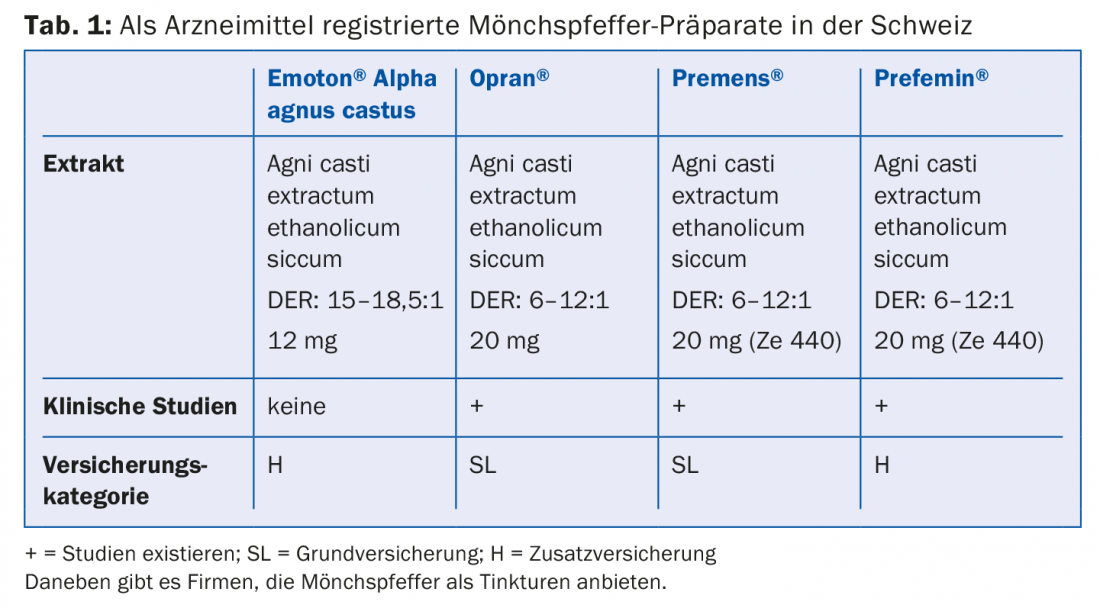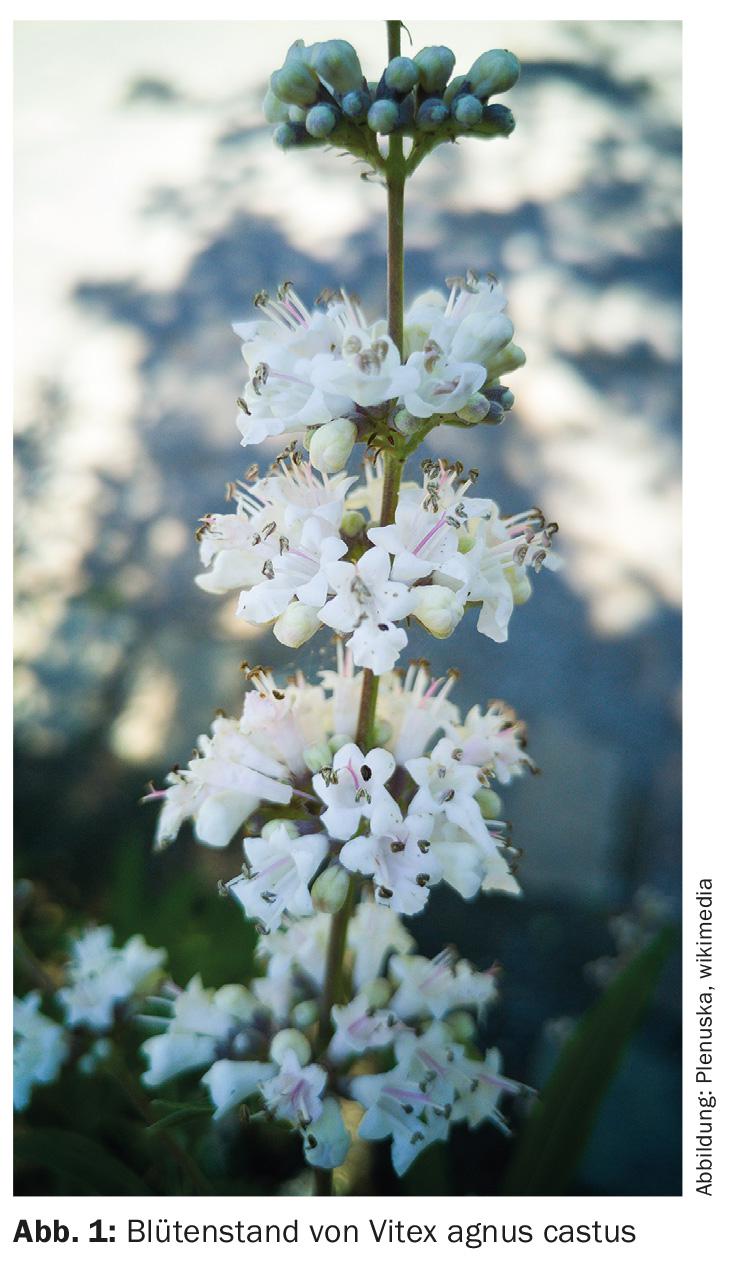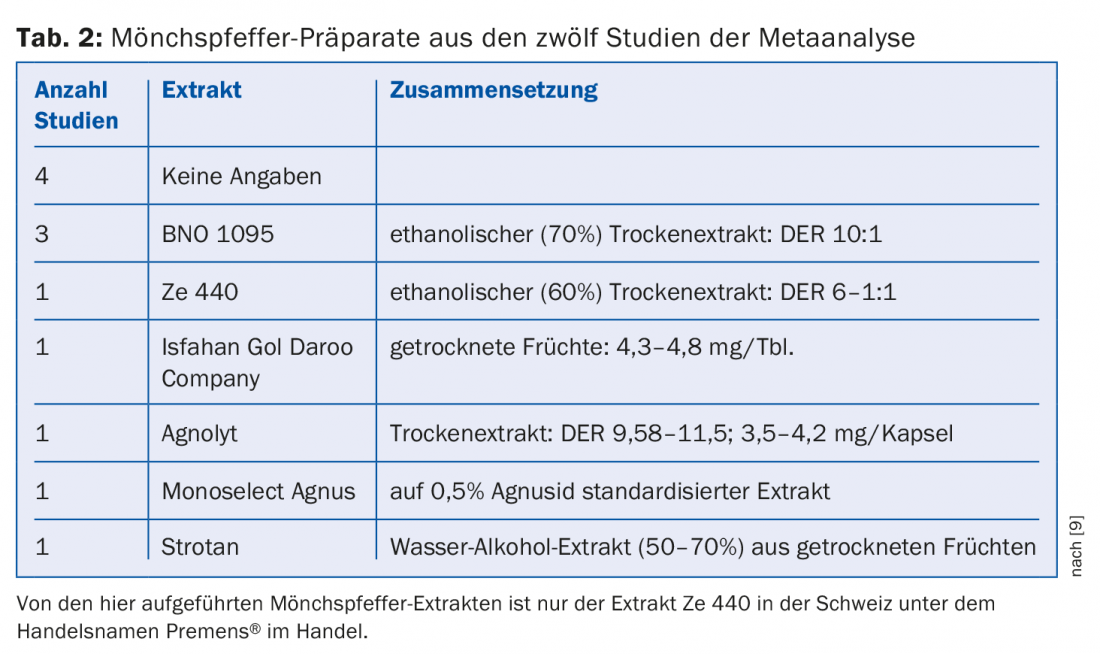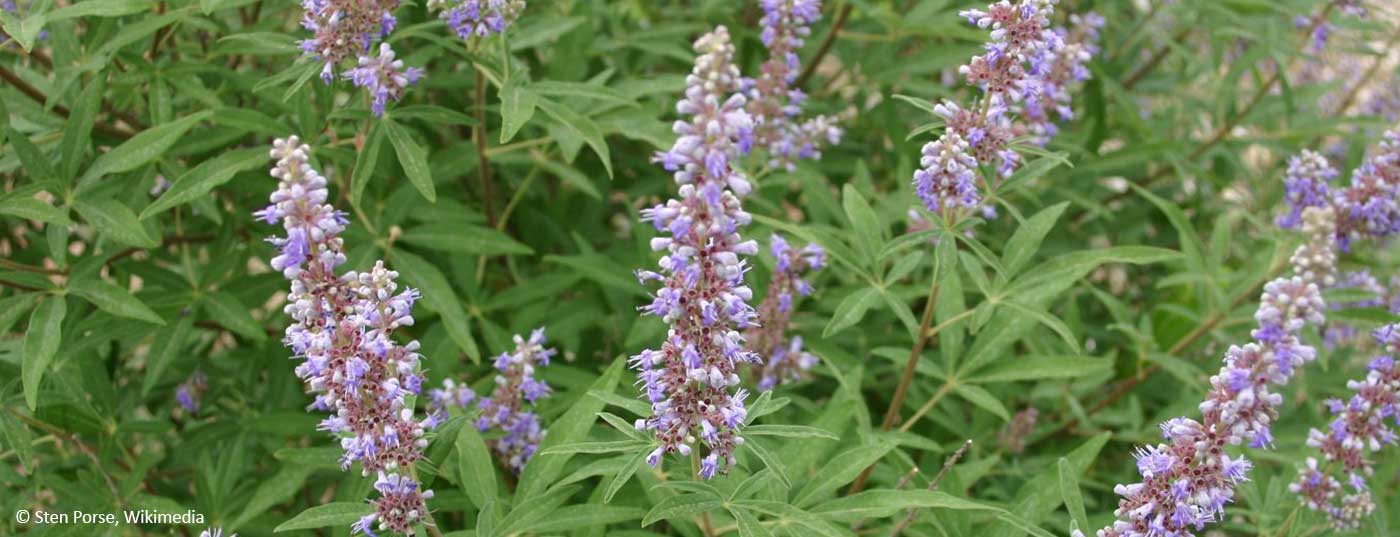Millions of women worldwide suffer from symptoms that occur before or during menstruation. In the past, complaints during menstruation were the focus of interest. The so-called premenstrual syndrome (PMS) only really started to be talked about when studies were published in renowned journals about 15 years ago, which proved the effectiveness of monk’s pepper preparations.
In 2001, an article [1] appeared in the renowned British Medical Journal that caused a sensation. This is because the BMJ, like most international medical journals, was very skeptical of complementary medicine in general and phytotherapy in particular, and it took a great deal for an article to be accepted that demonstrated the efficacy of a herbal medicine. The aforementioned 2001 article summarized the positive assessment of the efficacy of monk’s pepper extract Ze 440 for the treatment of premenstrual syndrome as follows: “Dry extract of agnus castus fruit is an effective and well tolerated treatment for the relief of symptoms of the premenstrual syndrome.”
Swiss preparations
At the same time, a drug with the indication “premenstrual syndrome” was registered in Switzerland for the first time. The package leaflet also mentions “menstrual cycle disorders”. Subsequently, other preparations based on monk’s pepper came onto the market in Switzerland (Tab. 1).

Monk’s pepper
Monk’s pepper (Vitex agnus castus, Lamiaceae) is a shrubby plant that can grow up to four meters high (Fig. 1). Many rumors and stories have grown up around it. In ancient times, the plant was said to have aphrodisiac properties. In the Middle Ages, monks are said to have used the plant as an anaphrodisiac, that is, for the exact opposite. It may be that the names “agnus castus” (“chaste lamb”) and “monk” (in “monk’s pepper”) have to do with this use. “Pepper” indicates that the plant was used as a spice, but not only by monastics.

Studies
Schellenberg’s results have since been confirmed by other studies [2–5]. The fact that PMS and its treatment possibility with monk’s pepper are not only found in the western hemisphere is shown by studies made with women in other cultures that demonstrate the effectiveness of Vitex magnus castus extracts for the treatment of PMS [6–8]. As a reminder, there are ethnic groups in which menopausal symptoms are completely unknown in women of the appropriate age.
Meta-analysis
A high level of evidence of the efficacy of monk’s pepper was provided by a meta-analysis published in 2013 [9]. This evaluated literature not only on the efficacy of monk pepper preparations for the treatment of premenstrual syndrome, but generally for the treatment of female reproductive disorders.
This meta-analysis included twelve RCTs that evaluated the efficacy
- in PMS (8 studies)
- for premenstrual dysphoric disorder (PMDD) (2 studies)
- In latent hyperprolactinemia (LHP) (2 studies).
investigated.
Placebo (6 studies), magnesium oxide (1 study), and pyridoxine served as comparators in the PMS studies. In the two PMDD trials, monk’s pepper was tested against fluoxetine. One of the two LHP trials was placebo-controlled, and the other used bromocriptine as a comparison.

Studies: Different monk’s pepper preparations were used for the twelve studies (Tab. 2), at different dosages (from 40 drops to 1800 mg/day). Several endpoints were assessed in the studies.
For PMS:
- Visual Analogue Scale (VAS), 3 studies
- Daily symptom rating scale, 1 study.
- Chinese version of the Premenstrual Tension Self Rating Scale (PMTS) and the Premenstrual Syndrome Diary (PMSD), 3 studies.
- Moss Menstrual Mistress Questionnaire plus, 1 study
- PMTS and Clinical Global Impression (CGI), 1 study.
For PMDD:
- Hamilton Depression Scale (HAMD), 1 study
- Daily Symptom Report (DSR), HAMD, Clinical Global Impression – Severity of Illness (CGI-SI), 1 study.
For hyperprolactinemia:
- Serum prolactin (days 5-8), chest pain (VAS), 1 study.
- Change in PRL, 1 study.
Results
PMS – versus placebo: Five of the six studies showed significant superiority of monk’s pepper preparations (p<0.05). In one study, a preparation containing soy was used as a placebo, which probably distorted the results. Soya may itself have some effect against PMS and was therefore probably responsible for the small difference between verum and placebo.
PMS – versus comparison: these studies showed highly significant superiority of monk’s pepper preparations for back pain, breast fullness, headache, irritability (p<0.001), but not for appetite modulation.
Latent hyperprolactinemia: Monk’s pepper proved to be effective in both the study with placebo and the study with bromocriptine as a comparison. In the placebo study, monk’s pepper showed highly significant superiority in all measured values (p<0.001). Compared with bromocriptine, monk’s pepper was shown to be equivalent, and even superior in terms of ADRs and compliance.
PMDD: Compared with baseline values, a significant improvement was determined in the two studies (in each case in both therapy arms). In one study, fluoxetine proved superior to monk’s pepper in terms of psychological symptoms. The herbal preparation showed superiority in somatic symptoms. In the other comparative study, fluoxetine was superior in both areas.
Ze 440
Of the extracts of Vitex agnus castus, monk’s pepper, discussed here, only extract Ze 440 is commercially available in Switzerland. It is an ethanolic dry extract (60% ethanol V/V) with a DER of 6-12:1.
The dose-dependent efficacy of Ze 440 was demonstrated in a 2012 publication [5]. In this four-arm placebo-controlled, double-blind, parallel-group study, women with PMS were administered either placebo or a daily dose of either 8, 20, or 30 mg of Ze 440 for three cycles. The severity of the various symptoms of PMS was assessed with a VAS. The improvement in the 20 mg Ze 440 group was significantly greater than in the placebo group and in the 8 mg Ze 440 group. The dose of 30 mg Ze 440 no longer resulted in significantly greater improvement than with 20 mg. This showed that a dose of 20 mg daily Ze 440 is the ideal dose.
Summary
The studies presented here, especially the meta-analysis by van Die et al. [9], show the convincing efficacy of monk’s pepper preparations for menstrual cycle symptoms, especially PMS. Thus, such preparations prove to be a convincing therapy for this indication. The best researched extract is Ze 440.
Literature:
- Schellenberg R: Treatment for the premenstrual syndrome with agnus castus fruit extract: prospective, randomized, placebo-cotrolled study. BMJ 2001; 322: 134-137.
- Di Pierro F, et al: Premenstrual Syndrome: Controlled clinical trial with a fast acting form of a highly standardized extract of Vitex agnus castus. Giorn It Ost Ginecol 2009; 31: 153-157.
- Pakgohar M, et al: Assessment of Vitex agnus-castus L. extract effect on treatment of premenstrual syndrome. J Med Plants 2009; 8: 98-107.
- Ciotta L, et al: Psychic aspects of the premenstrual dysphoric disorders, New therapeutic strategies: our experience with Vitex agnus castus. Minerva Ginecol 2011; 63: 237-245.
- Schellenberg R, et al: Dose-dependent efficacy of the Vitex agnus castus extract Ze 440 in patients suffering from premenstrual syndrome. Phytomedicine 2012; 19(14): 1325-1331.
- Zamani M, et al: Therapeutic effect of Vitex agnus castus in patients with premenstrual syndrome. Acta Med Iran 2013; 50: 101-106.
- Ma L, et al: Evaluating therapeutic effect in symptoms of moderate to severe premenstrual syndrome with Vitex agnus castus (BNO 1095) in Chinese women. Aust N Z J Obstet Gynaecol 2010; 50: 189-193.
- Momoeda M, et al: Efficacy and safety of Vitex agnus-castus extract for treatment of premenstrual syndrome in Japanese patients; a prospective, open-label study. Adv Ther 2014; 31(3): 362-373.
- van Die MD, et al: Vitex agnus-castus Extracts for Female Reproductive Disorders: A Systematic Review of Clinical Trials. Planta Med 2013; 79: 562-575.
HAUSARZT PRAXIS 2016; 11(7): 3-4












